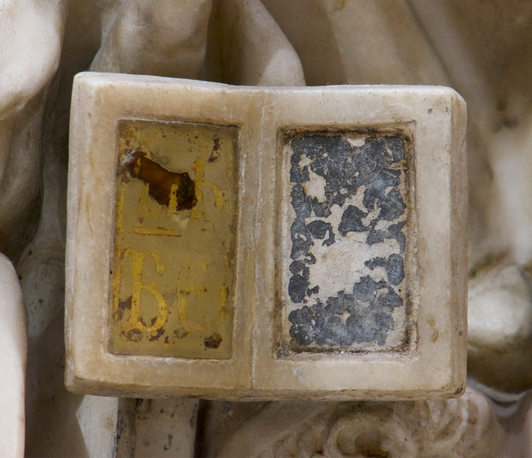Nicola Pisano in Colour
Research Seminar
- Data: 19.04.2023
- Ora: 17:00 - 18:30
- Relatore: Luca Palozzi in conversation with Franca Sorella
- Luogo: Villino Stroganoff, Via Gregoriana 22, 00187 Rome and online

They used softer stones such as alabaster and sandstone, minerals like gold and pyrite, as well as ivory, glass and various pigments — all of which gave their sculptural works a distinctive polychromy. But this new awareness and wealth of data about the workshop’s process have not been brought to bear on our understanding of Nicola’s work: despite knowing that the Pisani conceived their works in colour, we still think of Nicola as a new Polykleitos, and tend to photograph his works in black and white. The reasons for this lie partly in an ongoing blindness to colour, and partly in the fact that historians of sculpture have traditionally privileged the figurative over the decorative. Ever since Giorgio Vasari’s acknowledgment in his Lives of Nicola’s study of and borrowings from the ancient Roman sarcophagi of Pisa, his status has been relatively fixed as the first to revive the art of marble carving, lost since Antiquity — the first ‘Italian’ sculptor, as it were. And while this paradigm describes an important side of the story, it eclipses a different, equally significant aspect.
Putting technical analysis of the Pisani oeuvre into historical perspective, this seminar aims to retrieve a colourful image of artistic collaboration and experimentation in Pisano’s workshop. It also draws attention to all documented historical instances of care for Pisano’s work from the fourteenth century onwards. Although this constant process of maintenance has never been studied in a sustained fashion, it significantly altered not only the works as physical objects, but also our perceptions of them as artefacts, and of their meaning.
Luca Palozzi holds a PhD in Art History from the Scuola Normale Superiore, Pisa. Before joining the Università di Pisa in 2022, he held academic positions at Villa I Tatti, the Kunsthistorisches Institut and the University of Edinburgh. His research has been supported by the Kress Foundation, the Max-Planck Gesellschaft, the British Academy, the Henry Moore Foundation and the Association for Art History. His work has appeared or is forthcoming in international journals such as the Burlington Magazine, Source and Sculpture Journal. He is currently completing his monograph "Marco Romano e la costruzione del Gotico in Italia".
Franca Sorella has worked as a conservator in the stone restoration department of the Opificio delle Pietre Dure in Florence since 2002. She began her career in conservation at the Soprintendenza Archeologica del Piemonte in Turin. She has carried out numerous important restorations, among them the St John of Úbeda attributed to Michelangelo, the portal of San Petronio in Bologna (which includes works by Jacopo della Quercia, Amico Aspertini, Niccolò Tribolo and Alfonso Lombardi), the pulpit of Sant’Andrea by Giovanni Pisano, and Donatello’s St Mark.
To join the seminar via Zoom, please click here.
The password to join is: BH